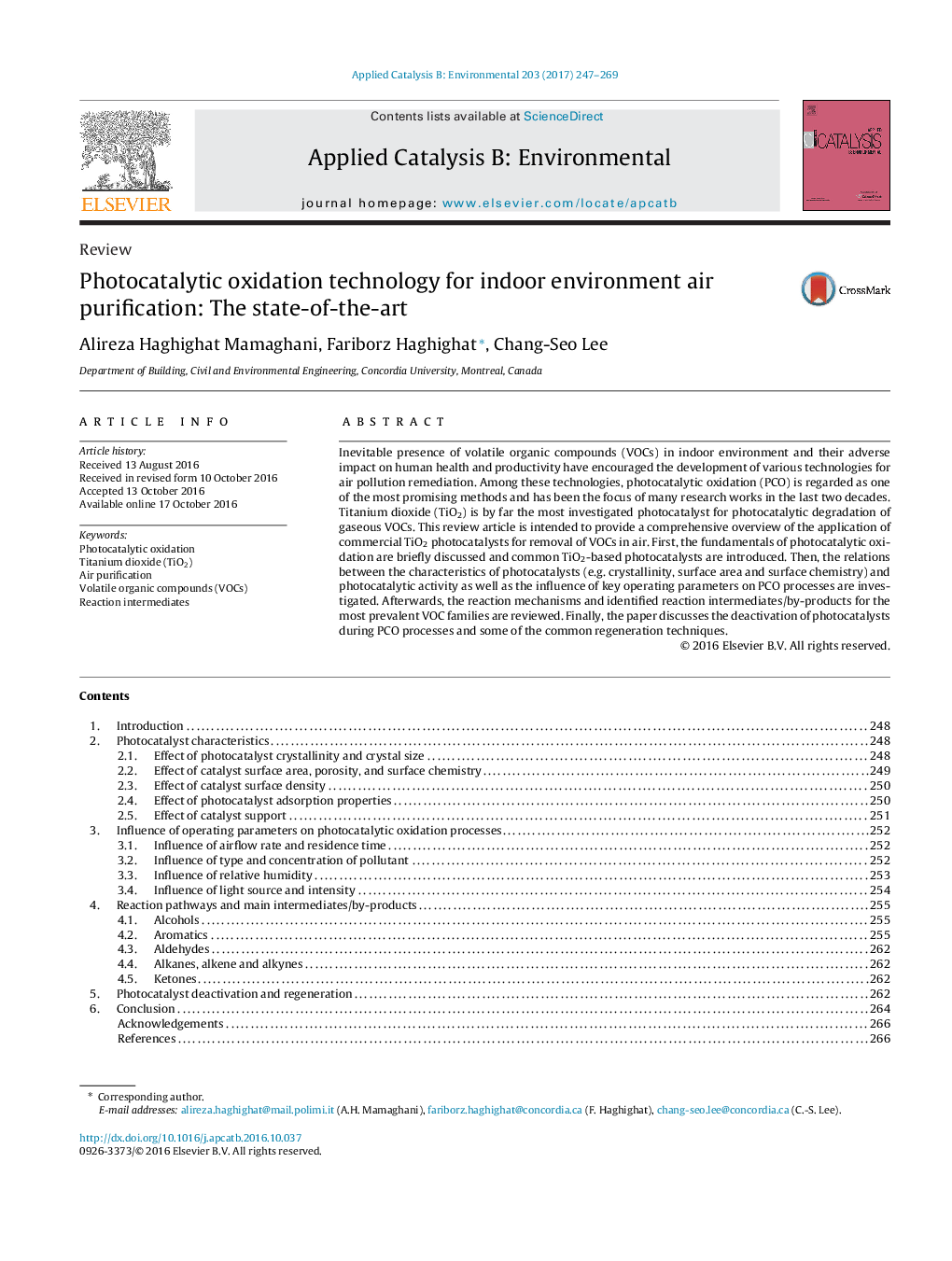| Article ID | Journal | Published Year | Pages | File Type |
|---|---|---|---|---|
| 6454451 | Applied Catalysis B: Environmental | 2017 | 23 Pages |
â¢Application of commercial TiO2 photocatalysts for indoor air purification is reviewed.â¢The connections between photocatalyst properties and performance are discussed.â¢The impact of key operating parameters on PCO efficiency is elucidated.â¢The proposed reaction pathways and reaction by-products are studied.â¢Photocatalyst deactivation mechanisms and regeneration techniques are highlighted.
Inevitable presence of volatile organic compounds (VOCs) in indoor environment and their adverse impact on human health and productivity have encouraged the development of various technologies for air pollution remediation. Among these technologies, photocatalytic oxidation (PCO) is regarded as one of the most promising methods and has been the focus of many research works in the last two decades. Titanium dioxide (TiO2) is by far the most investigated photocatalyst for photocatalytic degradation of gaseous VOCs. This review article is intended to provide a comprehensive overview of the application of commercial TiO2 photocatalysts for removal of VOCs in air. First, the fundamentals of photocatalytic oxidation are briefly discussed and common TiO2-based photocatalysts are introduced. Then, the relations between the characteristics of photocatalysts (e.g. crystallinity, surface area and surface chemistry) and photocatalytic activity as well as the influence of key operating parameters on PCO processes are investigated. Afterwards, the reaction mechanisms and identified reaction intermediates/by-products for the most prevalent VOC families are reviewed. Finally, the paper discusses the deactivation of photocatalysts during PCO processes and some of the common regeneration techniques.
Graphical abstractDownload high-res image (174KB)Download full-size image
